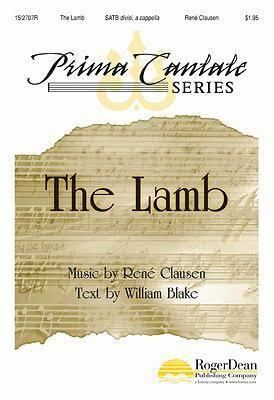Originally published 1789 | ||
 | ||
Similar Works by William Blake, Other books | ||
William blake s the lamb analysed
"The Lamb" is a poem by William Blake, published in Songs of Innocence in 1789.
"The Lamb" is the counterpart poem to Blake's poem: "The Tyger" in Songs of Experience. Blake wrote Songs of Innocence as a contrary to the Songs of Experience – a central tenet in his philosophy and a central theme in his work. Like many of Blake's works, the poem is about Christianity. The lamb is a common metaphor for Jesus Christ, who is also called "The Lamb of God" in John 1:29.
This poem has a simple rhyme scheme: AA BB CC DD AA AA EF GG FE AA. The layout is set up by two stanzas with the refrain: "Little Lamb who made thee / Dost thou know who made thee". In the first stanza, the speaker asks the lamb who his creator is; the answer lies at the end of the poem. Here we find a physical description of the lamb, seen as a pure and gentle creature. In the second stanza, the lamb is compared with the infant Jesus, as well as between the lamb and the speaker's soul. In the last two lines the speaker identifies the creator: God.
Like the other Songs of Innocence and Songs of Experience, The Lamb was intended to be sung; William Blake's original melody is now lost. It was made into a song by Vaughan Williams in his 1958 song cycle Ten Blake Songs, although he described it as "that horrible little lamb – a poem that I hate". It was also set to music by Sir John Tavener, who explained: "The Lamb came to me fully grown and was written in an afternoon and dedicated to my nephew Simon for his 3rd birthday." American poet Allen Ginsberg set the poem to music, along with several other of Blake's poems, in the 1970s.
